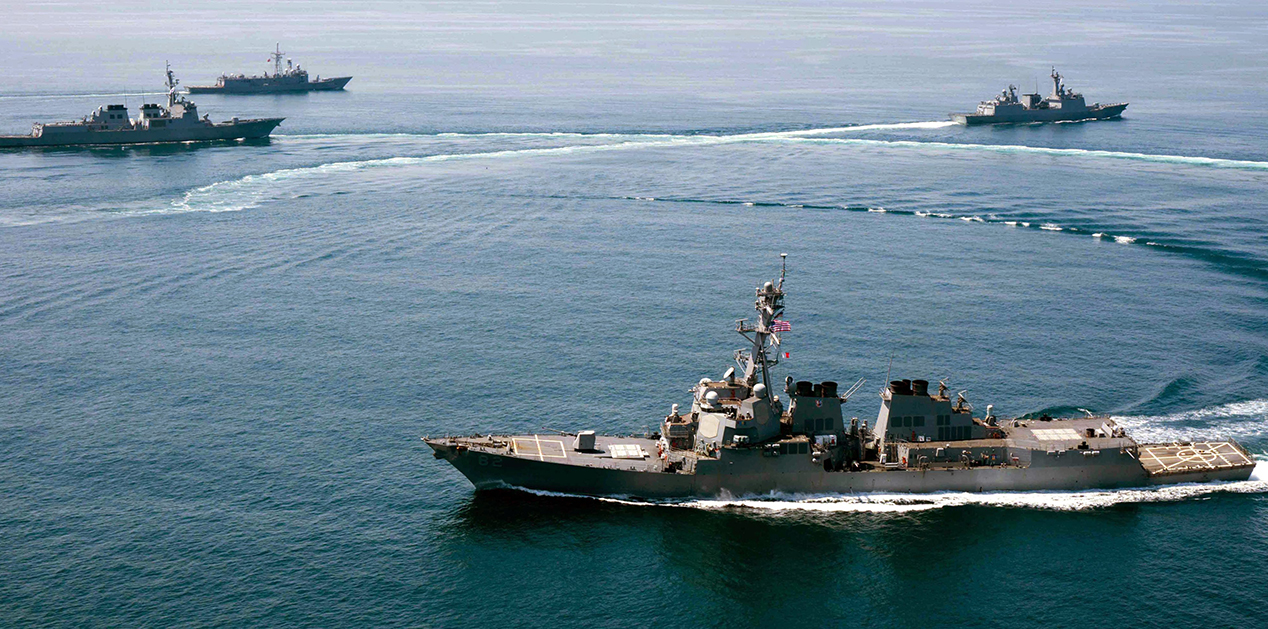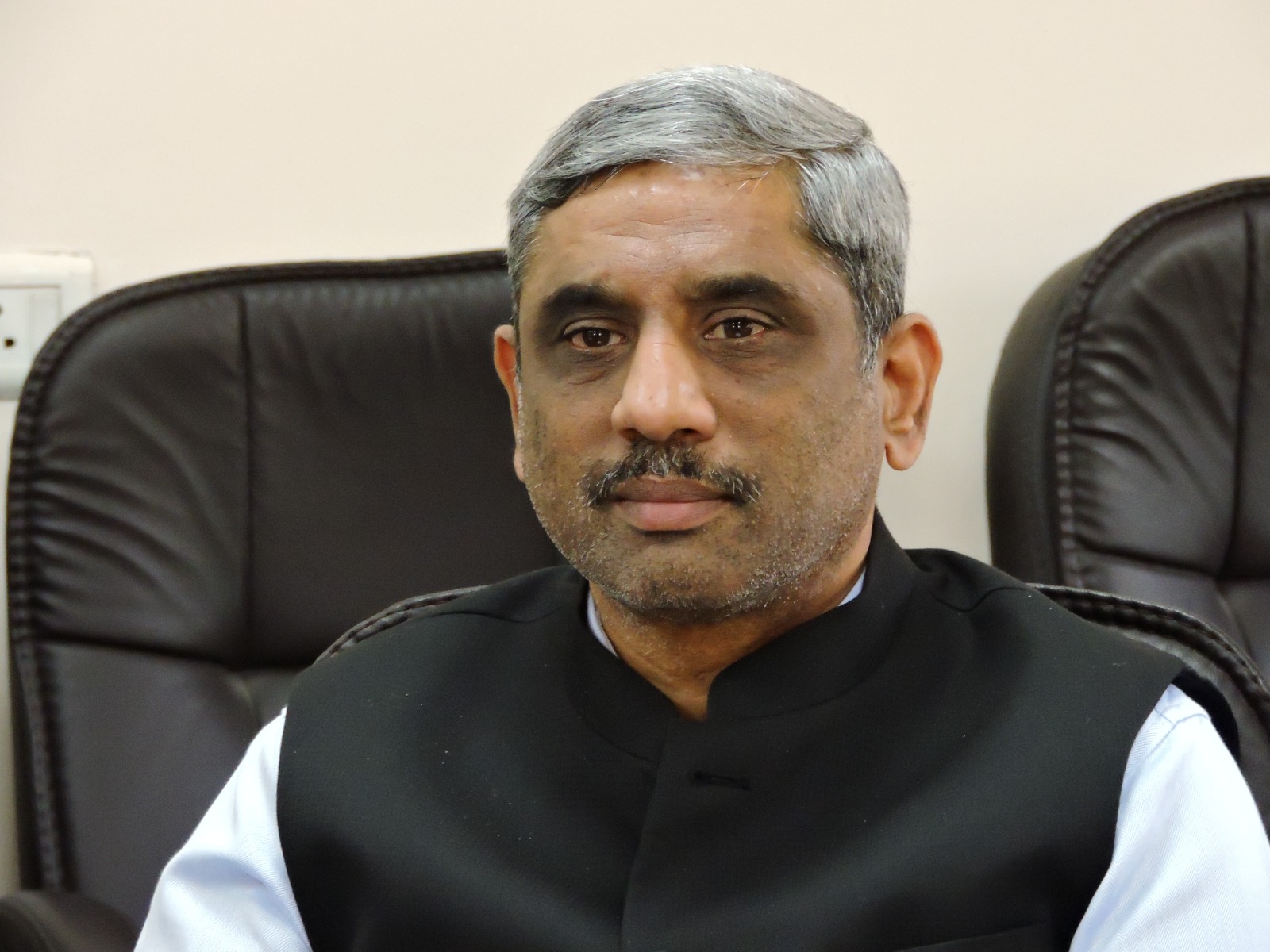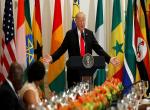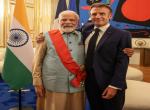The South China dispute has seen a recent spike in activity with the US Navy conducting a Freedom of Navigation patrol and Chinese fighters intercepting an American reconnaissance aircraft in the past few weeks. The much talked about case filed by Philippines in the Permanent Court of Arbitration against China’s excessive maritime claims reaching a head by early June. China claims almost the entire South China Sea as its territory within the ‘Nine-Dash Line’. China has also embarked upon an ambitious plan of land reclamation and construction of military and civilian facilities, including airstrips, helipads, missile batteries and radar installations, in the island it occupies. There is also talk of China declaring an ADIZ over the South China Sea. Consequently, China has been seen as overtly aggressive and overbearing in its approach to issues of the South China Sea. What is however, not seen much, is the outreach programme that China has initiated with the other claimants in the South China Sea dispute, especially Malaysia and Vietnam, the two major claimants, other than Philippines, to this dispute. Taiwan’s claims are coincident with China while Brunei does not have territorial claim. Vietnam is the only country which has had a conflict with China in the past. It is therefore worth examining the Vietnamese approach to this dispute, especially in the recent past and in the light of its growing relationship with the USA.
Vietnam’s dispute with China harks back to 1974 when China forcibly evicted the then South Vietnamese Garrison from the Pattle Island in the Western Paracels in the Battle of the Paracels. The Chinese also forced the Vietnamese out of Johnson South Reef in the Spratlys in 1988 after a brief naval battle. In the morning of March 14, 1988, when the Vietnamese soldiers were carrying construction materials to Johnson South Reef, Chinese warships appeared. Chinese soldiers shot Vietnamese soldiers. 64 Vietnamese naval soldiers died, nine others were taken prisoners. Johnson South Reef of Vietnam was illegally occupied by China since then. In other words, On March 14th, 1988, China used force to occupy the Johnson Reef of Vietnam. China’s navy used heavy arms to massacre underequipped Vietnamese sailors. Such brutal acts were strongly condemned by international community. However, China seemingly has not drawn any lessons from the Johnson Reef event, as they continue to use force to carry out its conspiracy to turn the whole South East Asia Sea into its home pond.
However, since then, China has not acted in a confrontational manner1. The one exception has been the incident of the oil rig HD 981 in May 2014 when China towed an oil rig into the waters of Vietnam's EEZ and established an exclusion zone around it. The incident saw Chinese and Vietnamese ships being involved in a fracas with claims and counter claims of each ramming the others ships. It also led to anti-China protests in Vietnam with collateral damage to Chinese owned businesses. China withdrew the rig in mid-July citing completion of planned work.
Vietnam currently occupies eight features in the Spratlys where it has also undertaken reclamation, though not on the same scale as China. Vietnam has also improved its bilateral ties with China, diplomatically, military and between the two Communist parties. The Chinese President visited Vietnam in November 2015 wherein the two countries agreed to properly manage and control differences between them, safeguard stability at sea and focus more on cooperation. China and Vietnam also agreed to launch a joint survey mission on the waters outside the mouth of the Beibu Gulf, marking the start of further maritime cooperation between the two countries2. The new Vietnamese President, Tran Dai Quang, has however said "Activities that caused destabilization, altered the status quo, violated international laws...have undermined the confidence and increased tensions” and added that "many countries in the region, and the international community feel insecure, have repeatedly raised voices expressing deep concerns”3.
China is also Vietnam’s top trade partner for the past decade with trade expected to touch $100 billion in 20164. The trade imbalance is very disparate with Vietnamese exports totalling $17 billion against a two way trade of $66 billion, according to the Vice Chairman of the Vietnam Chamber of Commerce and Industry5. Chinese FDI in Vietnam has increased from $312 million in 2012 to over $2.3 billion in 2013. In January 2016, FDI China ranked third with $179.51 million, according to the Foreign Investment Agency of Vietnam6. Professor Nguyen Mai, Chairman of the Foreign Investment Association of Vietnam says that this Chinese investment is mostly concentrated in “cities and industrial zones in the border provinces between the two nations” in natural resources such as a titan iron ore processing plant, an antimony plant and also in rubber and wood product manufacturing plants7. This trend of Chinese investment has put the Vietnamese on their guard and they are understandably worried about the prospect of depletion of natural resources. The Vietnamese are therefore looking at tightening controls to curb Chinese investments in such sectors. The Vietnamese are also looking for other avenues and have been encouraging the Japanese and Koreans to invest in high technology sectors to draw the benefit of modern engineering processes. Notwithstanding these worries, the skewed trade relations with China places Vietnam at a risk of economic ‘arm twisting’ to suit China’s strategic interests, which is obviously not a very palatable proposition for the Vietnamese.
Vietnam has also been one of the larger spenders on defence equipment in the last decade in South East Asia. According to SIPRI, defence expenditure has substantially increased from $1.8 billion in 2005 to $ 4.6 billion in 2015 (at 2014 prices). It currently constitutes about 2.3 % of the national GDP and 8.1 % of government expenditure, a major increase over the past decade. Vietnam has bought submarines, frigates and is looking to acquire multi-role jet fighters and other naval platforms. It has bought most of its equipment from Russia while it is also looking elsewhere for future acquisitions. Its six Kilo class submarines from Russia, similar to what India possesses, are armed with anti-ship and land attack cruise missiles and thus constitute a significant threat to any potential enemy in the neighbourhood. Vietnam is also increasing its maritime cooperation with Japan, which is providing it with more second hand vessels for use as patrol ships to boost its maritime patrolling capabilities, in addition to the six already handed over8. The recent US move to lift the ban on arms sales to Vietnam, though largely symbolic, further increases the number of potential sellers to Vietnam. It is however, quite unlikely that the Vietnamese are going to be buying any big ticket American arms considering their relatively modest budget. Vietnamese tenacity and intent is also clearly discernible in the recent deployment of their new submarines in the South China Sea9. Though the Vietnamese Navy is significantly smaller than the PLA Navy, the submarines pose a credible deterrent, especially in the littoral of the South China Sea. Vietnam is also looking to modernise its strategic deep water port of Cam Ranh Bay, whose proximity to the South China Sea poses a credible deterrent to Chinese aspirations of control over this area. Considering the past Sino-Vietnamese history of conflict and the ongoing modernisation of the Vietnamese armed forces, Vietnam is a state to reckon with in China’s security calculus for the South China Sea dispute. The likelihood of Vietnam being swayed by Chinese economic influence or diplomatic overtures with regard to its territorial disputes in the South China Sea is low and hence it constitutes a serious rival to China’s claims.
India and Vietnam are broadening their relationship to encompass all possible areas of cooperation as also deepen the existing strategic partnership, which is in keeping with India’s own Act East policy. OVL has decided to seek a third extension of exploration licence for Block 128 to maintain India's strategic interest in the South China Sea. Bilateral trade between India and Vietnam crossed $8 billion in 2013-14, achieving the target of $7 billion by 2015 well in advance, and have now agreed on a target of $ 15 billion by 2020. Defence cooperation is an important aspect of this growing strategic partnership. The Vietnamese Defence Minister General Phung Quang Thanh visited India in May 2015 during which a five-year joint vision statement for the period 2015-2020 on defence cooperation and an MoU on cooperation between the coast guards of the two countries were signed, though details of the same are classified10. According to news reports, the Vietnamese are keen on India training their submarine personnel. India was also looking at selling the Brahmos supersonic cruise missile to Vietnam. But according to Indian government officials, the deal has not been finalised so far11. However, it appears that India is veering towards sale of these missiles to Vietnam with the Defence Minister Manohar Parrikar apparently having had discussions on the same with his Vietnamese counterpart during his recent visit to Vietnam12. India is also setting up a satellite tracking and imaging centre in southern Vietnam that will give Hanoi access to pictures from Indian earth observation satellites that cover the region, including China and the South China Sea13.
Vietnam is one of the major claimant states in the South China Sea dispute in which India does not take a position on the issue of sovereignty. China’s continued land reclamation and aggressive posturing in this dispute has earned it the suspicion as also ire of Vietnam and the other claimants as also the world at large. China is also extremely sensitive about involvement of external states in the disputes. It therefore views the US as an inimical party because of its Freedom of Navigation (FoN) patrols in the recent past and its purported support to Philippines in the case against China in the Permanent Court of Arbitration. China also harbours suspicions about India and the US in the context of its ‘Malacca Dilemma’ and is consequently increasing tis maritime military footprint in the Indian Ocean Region, thereby increasing India’s maritime security concerns. The growing Indo-Vietnamese relationship provides India with sufficient leverage to countervail China in this regard. India’s acquiescence to the Vietnamese request for submarine training will ensure a quid pro quo to the Chinese supply of submarines to Bangladesh and deter them from further exploiting such ventures to their advantage. The sale of Brahmos missiles, if it comes through, will provide a huge impetus to this relationship, apart from establishing India’s credentials as a supplier of modern military weapons. Indian aid to Vietnam for the development of Cam Ranh Bay, on the lines of Chabahar, will increase our maritime footprint in the Pacific, which will blend in well with our strategic relationships with Japan and the US in the Asia-Pacific. These linkages will further strengthen Vietnam and give it the required heft to control Chinese ambitions thereby buttressing stability and peace in the South China Sea.
Endnotes
- Tønnesson, Stein. "Vietnam's Objective in the South China Sea: National or Regional Security?" Contemporary Southeast Asia 22.1 (2000): 199-220. Web.
- Commentary: Xi's Vietnam, Singapore visit builds new diplomatic furniture in Southeast Asian countries. http://news.xinhuanet.com/english/2015-11/08/c_134795523.htm. Accessed on 09 Nov 15
- ‘Vietnam's president calls for peace and stability in S. China Sea’. HANOI, May 21, Kyodo. https://english.kyodonews.jp/news/2016/05/412480.html. Accessed on 31 May 16.
- ‘China, Vietnam to fulfil trade target of $100b in 2016’. Xinhua, 2016-03-09. http://www.chinadaily.com.cn/business/2016-03/09/content_23791827.htm. Accessed on 03 Jun 16.
- ‘China top trade partner of Vietnam: Vietnamese official’. Xinhua, 2016-03-08. http://www.chinadaily.com.cn/business/2016-03/08/content_23781642.htm. Accessed on 03 Jun 16.
- ‘Chinese FDI in Vietnam: It is time to tighten, experts say’. http://english.vietnamnet.vn/fms/business/152159/chinese-fdi-in-vietnam--it-is-time-to-tighten--experts-say.html. Accessed on 03 Jun 16.
- ‘Chinese Investment In Vietnam Is Accelerating’. The Hanoitimes, Thursday, 24 Mar 2016. http://hanoitimes.com.vn/investment/opportunities/2016/03/81e0a0ee/chinese-investment-in-vietnam-is-accelerating/. Accessed on 03 Jun 16.
- ‘Japan, Vietnam Agree To Boost Maritime Security Cooperation’. KYODO, MAY 6, 2016.
http://www.japantimes.co.jp/news/2016/05/06/national/politics-diplomacy/japan-vietnam-agree-boost-maritime-security-cooperation/#.VywwAoR95dg
Accessed on 06 May 16. - ‘South China Sea Dispute: Vietnamese Subs Deployed As Deterrent to China’. The Sunday Morning Herald, January 7, 2016. Lindsay Murdoch.
http://www.smh.com.au/world/vietnamese-subs-deployed-to-south-china-sea-20160107-gm0z6a.html. Accessed on 08 Jan 16 - ‘India, Vietnam agree to scale up defence cooperation’. PTI | May 26, 2015. http://timesofindia.indiatimes.com/india/India-Vietnam-agree-to-scale-up-defence-cooperation/articleshow/47432289.cms. Accessed on 03 Jun 16.
- ‘India, Vietnam ink 5-year defence pact amid Chinese naval expansion’. Tue, May 26 2015. http://www.livemint.com/Politics/bUWnCvNDTwkT513o5ITodP/India-Vietnam-ink-5year-defence-pact-amid-Chinese-naval-ex.html. Accessed on 03 May 16.
- ‘Manohar Parrikar meets Vietnamese Defence minister; discuss sale of supersonic missile Brahmos’. Sun, 5 Jun 2016, New Delhi. PTI. http://www.dnaindia.com/money/report-manohar-parrikar-meets-vietnamese-defence-minister-discuss-sale-of-supersonic-missile-brahmos-2220281. Accessed on 06 Jun 15
- ‘India to build satellite tracking station in Vietnam that offers eye on China’. Reuters, Posted by Dianne Nongrum, New Delhi/Hong Kong, January 25, 2016. http://indiatoday.intoday.in/story/india-to-build-satellite-tracking-station-in-vietnam-that-offers-eye-on-china/1/578967.html. Accessed on 03 Jun 16.
Published Date: 13th June 2016, Image Source: http://www.uscnpm.org
(Disclaimer: The views and opinions expressed in this article are those of the author and do not necessarily reflect the official policy or position of the Vivekananda International Foundation)










Post new comment